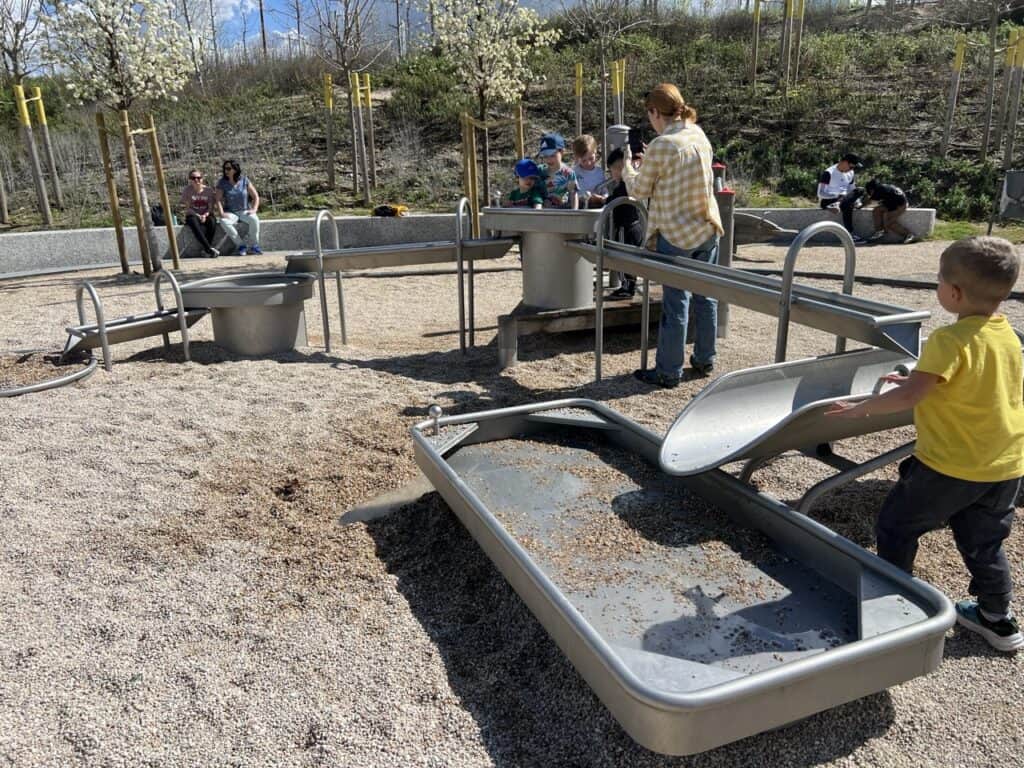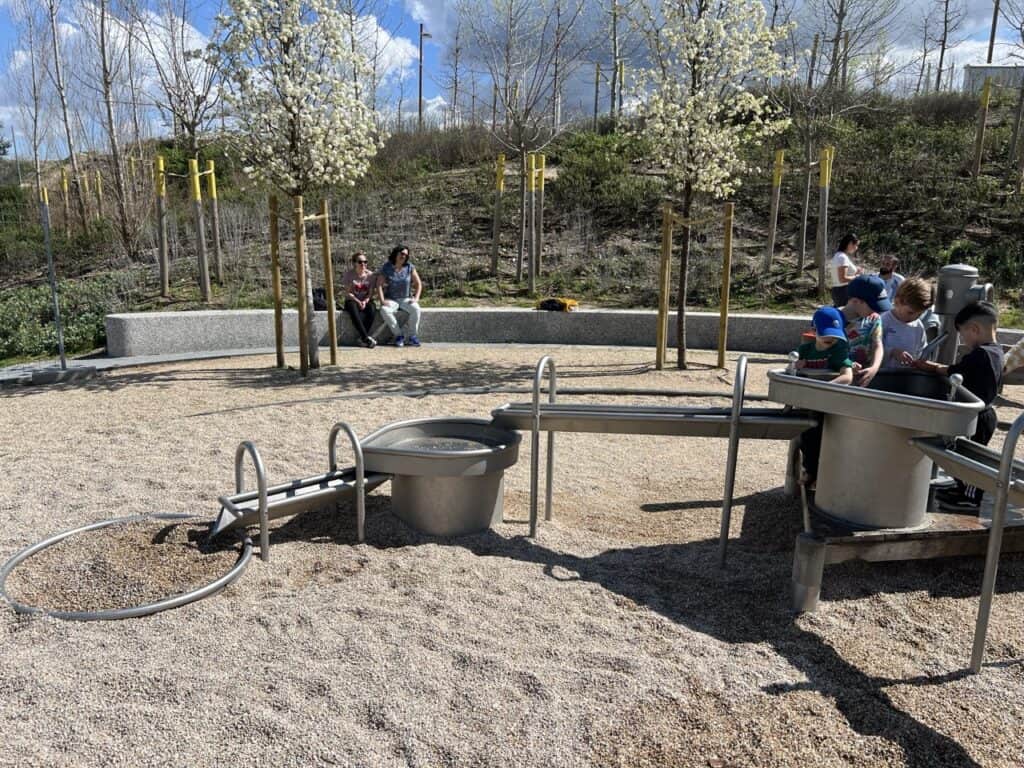Cooperation Without Words: When Free Play Becomes a Montessori Lesson
“The first idea that the child must acquire, in order to be actively engaged in their environment, is the difference between good and bad; and this they learn by working in community.”
— Maria Montessori
It’s a sunny morning in a park in Madrid. The sky is clear, the trees are in bloom, and a group of children – most of them strangers – are playing together at a large metal water station. One pumps the water, another guides it along a chute, others help shift pebbles or collect the flowing stream in cupped hands. No words are exchanged, yet a perfectly coordinated system unfolds.



These images (📷 shown above) capture more than just a playful moment—they’re a living, breathing example of core Montessori principles: community work, self-organization, and freedom with responsibility.
Cooperative Play as a Prepared Environment
In Montessori education, the prepared environment is fundamental. While we often focus on indoor spaces, outdoor environments should also be thoughtfully designed to invite exploration, experimentation, and—beautifully—collaboration. The water station in these photos, with its ramps, valves, and trays, is an ideal example of that. Made from materials like metal and stone, it offers children a multi-sensory experience with real-world textures, temperatures, and resistance.
There’s no need for flashing lights or instructions. The cool feel of the metal, the sound of water, the weight of wet pebbles—all invite children to touch, move, and investigate. The setup naturally encourages cooperation: while one child pumps water, another must wait; while one collects rocks, others help direct the flow. Each action feeds into the next.
This is community work in action—not through rules or roles, but through a shared purpose and a respectful, coordinated rhythm.
Independence that Fosters Collaboration
Montessori spoke often of “inner discipline,” which grows not from obedience but from autonomy. What we witness in this park is that autonomy in practice: each child is freely choosing how to engage, yet they’re intuitively working together.
This embodies the core Montessori principle of freedom within structure. The structure is offered by the water station and its logical flow system; the freedom lies in how each child decides to interact with it.
What’s especially moving is that this cooperation emerges naturally. No adult instructions, no assigned tasks. Just pure, child-led engagement. This is the Montessori belief in action: that when given the right environment, children reveal their innate ability to connect, help, and create together.
Environment, Materials, and Community
One key reason this works so well is the choice of materials. Montessori environments prioritize natural and real materials—wood, metal, stone—over plastic or synthetic ones. Why? Because they provide authentic sensory feedback.
The cold metal, the textured stones, the push and pull of water—these aren’t simulated experiences. They’re real. And that authenticity deepens concentration, awareness, and purposeful movement.
This Madrid playground could easily be seen as an extension of a Montessori classroom. It’s beautiful, logical, tactile, and open-ended. It offers children the tools to explore cause and effect, work side by side, and develop social-emotional skills—all without a single instruction manual.
The magic? It’s silent. It’s spontaneous. And it’s real.
🌱 What This Scene Teaches Us
Cooperation doesn’t need instruction—it needs space and purpose.
Natural materials like metal and stone enrich play and learning.
Free, purposeful play supports Montessori values of independence, concentration, and mutual respect.
When we trust the child and the environment is right, learning becomes a social, joyful act.
This playground—with its subtle aesthetics and intentional design—reminds us of Maria Montessori’s timeless wisdom: when children are given the freedom to explore a meaningful environment, they don’t just play—they build community.
✨ Want more ideas for encouraging cooperative play inspired by Montessori principles—at home or in the classroom?
Subscribe to our blog and join us in this journey of respectful, connected learning.



